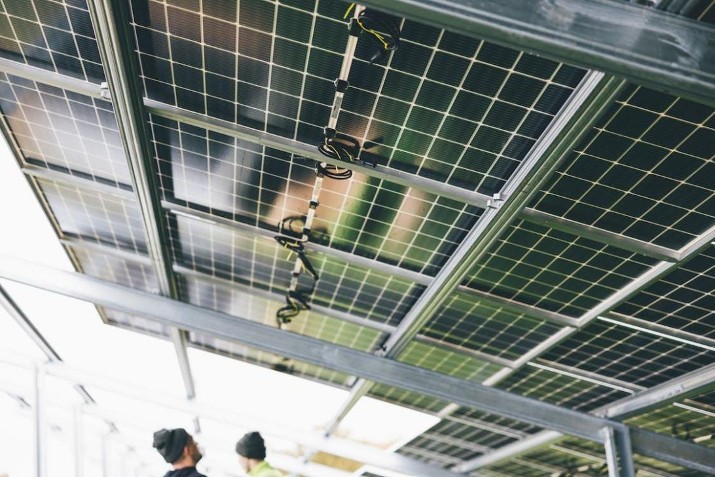
The time when all businesses run on clean, renewable energy, reducing their carbon footprint and saving money is pretty close. In fact, this utopia is well within their reach. Businesses can join forces with mother nature and boost their operations. In this guide, renewable energy headhunters, who have several years of experience working in this industry, explain how you can take your business to new heights of sustainability and efficiency with the integration of solar energy.
Step 1: Assess Your Energy Usage
The first step in making your business more energy-efficient with solar power is to assess your energy usage. This will give you an idea of how much energy your business consumes and where it’s being used. You can review your energy bills or conduct an energy audit.
An energy audit is a process that involves examining all of the energy-using systems in your business, such as lighting, heating, cooling, and appliances, to identify areas where your business can save energy. The annual electricity usage for a small business is between 15,000 kWh and 25,000 kWh, but this can vary based on the type of business. In comparison, larger businesses have a lot more usage.
Step 2: Calculate Your Solar Energy Needs
Once you have assessed your energy usage, you can use this information to calculate your solar energy needs. You will need to determine how much energy your business needs to meet its daily requirements and how much solar energy you will need to generate to meet this demand. You can use online tools or work with a solar energy expert to determine your energy needs and the size of the solar energy system that is right for your business.

Step 3: Design Your Solar Energy System
Once you have determined your energy needs, you can start designing your solar energy system. The first thing to consider is the type of solar panel you will use. There are two main types of solar panels: monocrystalline and polycrystalline. Monocrystalline panels are more efficient, but they are also more expensive. Polycrystalline panels are less efficient but are more affordable. You should choose the type of panel that best fits your budget and energy needs.
Next, you will need to determine the size of the solar panel system you will need. This will depend on your energy usage, the amount of sunlight available in your area, and the size of your roof or ground space. You should also consider the orientation of your roof or ground space to ensure that the panels receive the maximum sunlight. Doing this on your own and finding the correct size can be difficult, so you should work with solar panel technicians.
Step 4: Install Your Solar Energy System
Once you have designed your solar energy system, the next step is to have it installed. This can be done by a professional solar energy installer or with a DIY kit, although the latter isn’t recommended. If you choose to have your solar energy system installed by a professional, you should select a reputable company with experience installing solar energy systems for businesses.

Step 5: Monitor and Maintain Your Solar Energy System
Once your solar energy system is installed, you should monitor it regularly to ensure it is functioning properly and generating the maximum energy. You should also perform regular maintenance on your system to ensure it continues operating at peak efficiency. Typically, solar panels need maintenance two to four times a year.
Step 6: Consider Battery Storage
Battery storage is a great way to maximize the benefits of your solar energy system. It allows you to store excess energy generated during the day to use it when needed. This can be especially useful for businesses that consume a lot of energy at night when the sun is not shining. A battery storage capacity is between 1 kWh to over 10 kWh, but you can combine multiple batteries for more capacity.
Step 7: Take Advantage of Tax Credits and Incentives
Finally, you should take advantage of tax credits and incentives available for businesses that use solar energy. Many governments offer tax credits and other incentives to encourage businesses to adopt clean energy sources, such as the Federal Solar Tax Credit in California, which covers 30% of the cost of installation. These incentives can offset the cost of your solar energy system and make it more affordable.

Looking for Top Talent In the Renewable Energy Industry
Making your business more energy-efficient with solar power is a smart investment, but only if you trust the right company. If you’re a business starting out in the solar energy business, you have a lot of competition ahead of you. The way to get ahead is by providing a good product and having the right employee.
If you’re looking for the best talent, check out the executive recruiting firm, the Whitham Group. They have solar energy recruiters with a high success rate. Around 96% of offer letters sent to potential recruits are accepted. This is because their renewable energy executive recruiters have an extensive database built from a comprehensive recruitment process. The executive recruiters match the best talent with the company.
Get in touch with their executive recruiters today!
About the Author
The author is a solar energy staffing expert associated with the Whitham Group. He aims to positively impact the environment by locating skilled individuals for the energy sector to support its growth and success. In his free time, he likes writing articles on why the renewable energy industry is the way forward for businesses and homeowners alike.




